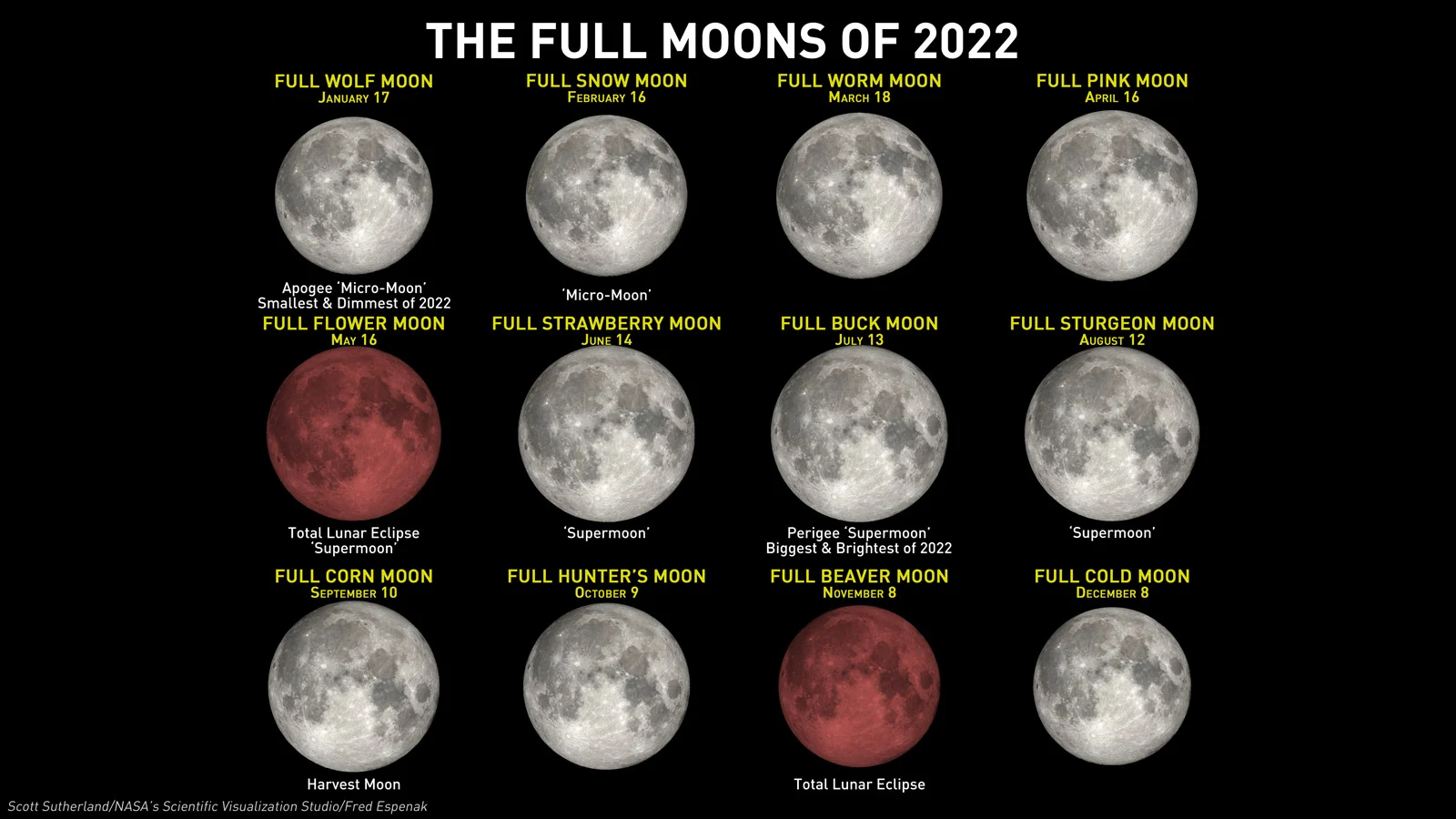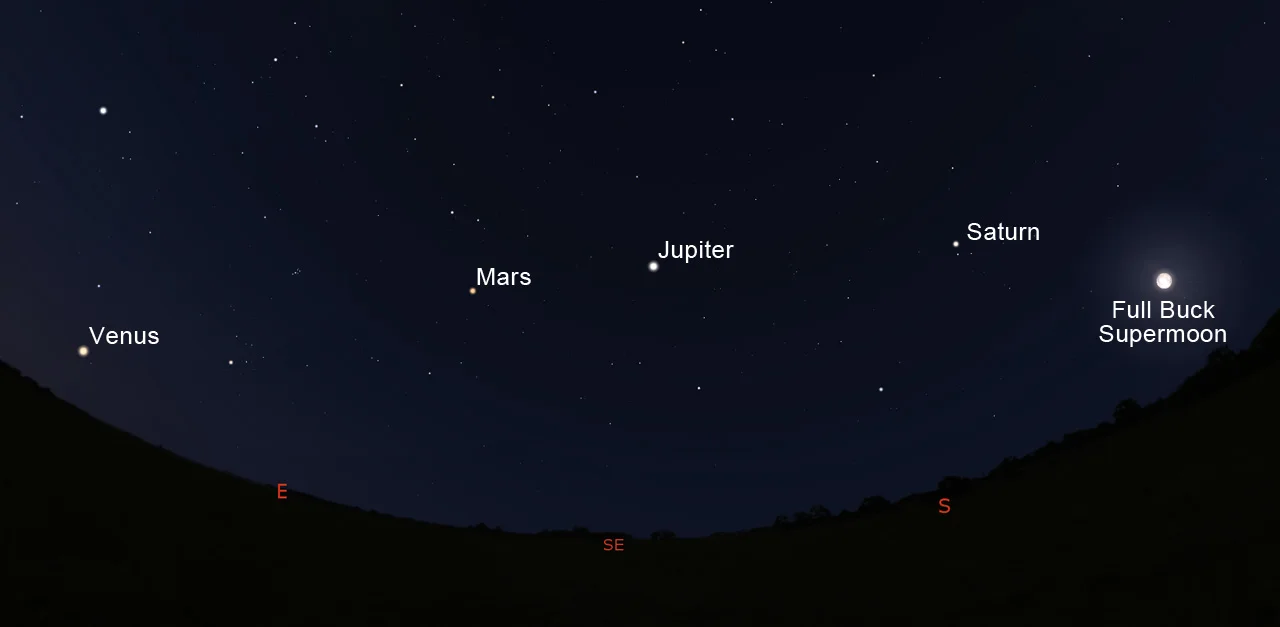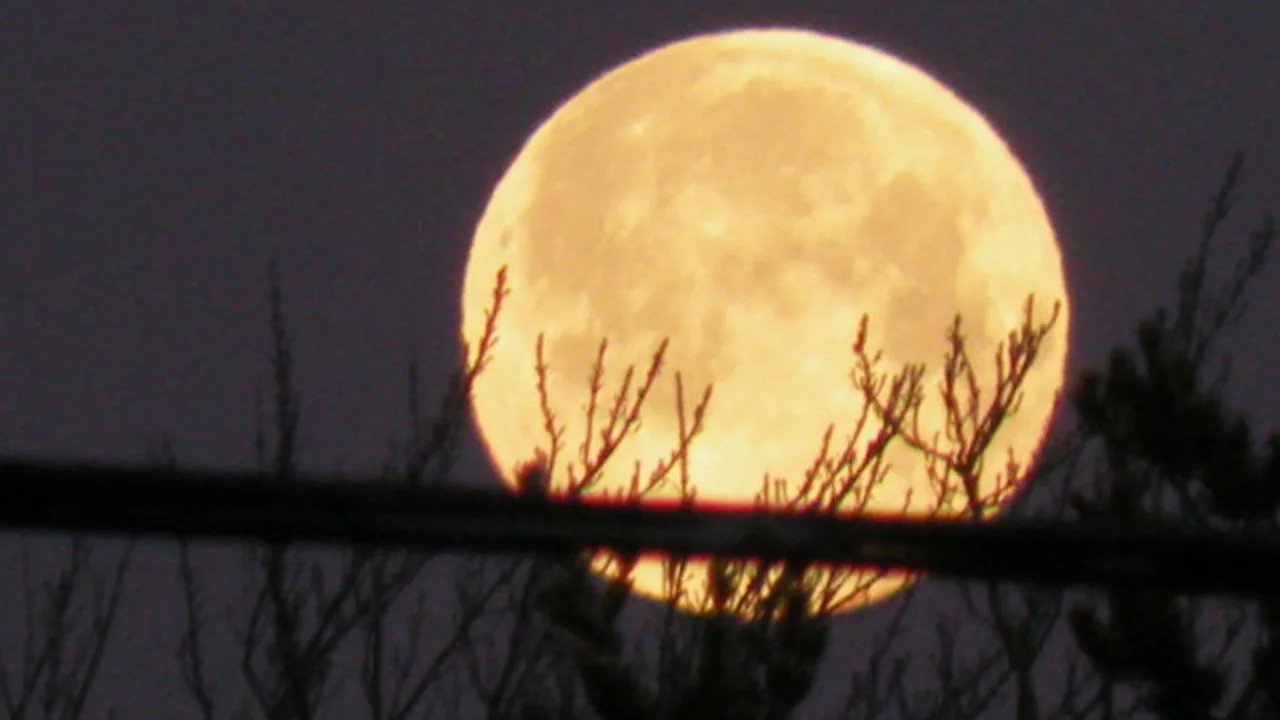
Look up! The biggest, brightest supermoon of 2022 rises tonight!
The Super Buck Moon will be in the sky tonight, so take a few moments to check it out!
Check your weather forecast for tonight to see if you'll have clear skies. You won't want to miss the Super Buck Moon.
The Full Moon rises Wednesday night, and it's worth stopping, even for a few moments, to take in the sight as this is 2022's perigee supermoon — the closest, largest, and brightest Full Moon we'll see for all of this year.
What is a 'Buck' Moon?
According to NASA, there are many names for this Full Moon. Nearly a century ago, the Maine Farmer's Almanac began using the name 'Buck Moon', attributing it to the Algonquin peoples of the U.S. Northeast.
"Early summer is normally when the new antlers of buck deer push out of their foreheads in coatings of velvety fur," they wrote. "They also called this the Thunder Moon because of early Summer's frequent thunderstorms."
Lightning safety tips: "When thunder roars, go indoors!"

This graphic collects all the relevant data about each Full Moon of 2022, including their popular names, whether they are a 'super' or 'micro' Moon, a 'perigee' or 'apogee' Full Moon, and whether they are remarkable in some other way (Harvest Moon, or due to a lunar eclipse). Credit: Scott Sutherland/NASA's Scientific Visualization Studio/Fred Espenak
It's also known as the Hay Moon in parts of Europe, as this is traditionally the time of year for haymaking, or also the Mead Moon.
Hindus, Buddhists, and Jains call it the Guru Full Moon (or Guru Purnima) — a time to honour spiritual or academic gurus.
It is Asalha Puja for Theravada Buddhists, celebrating the Buddha's first sermon, and marking the beginning the three-month long retreat during the monsoon season known as Vassa.
DON'T MISS: The best products for stargazing this summer
OK, so what's a 'super' moon?
A supermoon is a Full Moon that appears bigger and brighter in the sky because it is closer to Earth.
If you carefully observe the Moon, night by night, you will notice that along with its changing phases, it also gets bigger and smaller in our sky over the course of a month.

The phases of the Moon for July 2022. Note that the size of the Moon changes from frame to frame, due to the changing distance between the Moon and Earth. Credit: Scott Sutherland/NASA's Scientific Visualization Studio
This apparent difference in size is due to the shape the Moon traces out as it orbits around Earth — not a perfect circle but an ellipse. So, sometimes the Moon is closer to Earth, and the nearest point it reaches in an orbit is known as perigee. At other times it is farther away, and its farthest point in an orbit is known as apogee.
The term 'supermoon' was first used by astrologer Richard Nolle, who defined it as being when the Full Moon is "within 90 per cent of its closest approach to Earth in a given orbit."
The Full Moon of July 13 happens to be the biggest and brightest of all the Full Moons of 2022 — the 'perigee' supermoon!
According to retired NASA scientist Fred Espenak, this supermoon is a little over 30 per cent brighter than January's apogee Full Moon, or nearly 16 per cent brighter than the average Full Moon (like the one back in March).
Read more: Why is the supermoon so compelling to us?
It's not alone
The Super Buck Moon will not be completely alone tonight. It will lead a string of bright planets as it crosses the sky.

The July 13 Full Buck Moon has two bright companions in the sky. This image shows the southeastern sky at around 12:30 a.m. local time on July 14. The two inset images reveal what Jupiter and Saturn (and their satellites) would look like through a telescope. Credit: Stellarium/Scott Sutherland
First, Saturn will rise about an hour after the Moon crests the horizon. Jupiter will follow, about an hour and fifteen minutes later.
If you're up before the Sun rises, and you have a clear view, you can spot the entire string of bright objects across the sky, as Mars and Venus rise to join the lineup early in the morning hours.

A string of planets stretches out behind the Full Buck Supermoon at 4:30 a.m. local time, on July 14. Credit: Stellarium/Scott Sutherland
Out of this World: Overlapping meteor showers put on a show in the night sky this summer
Also, there's the potential for a special bonus to this view, as well. Earth just slipped into the icy debris stream from comet 96P/Machholz, which is what produces the annual Southern Delta Aquariid meteor shower. This meteor shower is visible from July 12 through August 23, and it typically peaks on the nights of July 28 and July 29. The shower will likely only be producing a few meteors per hour at this time, but if you're lucky, you may be able to spot them!
WATCH: See the Moon, hour by hour for all of 2022, in less than 5 minutes
The Mysterious Moon Illusion
Seeing the Full Moon at any time of night is a spectacular sight. However, go out just after moonrise or just before moonset for what is usually an exceptional treat. It's not something the Moon itself is doing, though. Instead, it's due to a little trick of our mind known as The Moon Illusion.
There are times when the Moon actually does look bigger to us, such as during a supermoon, when the Moon is physically thousands of kilometres closer to Earth than usual. There are other times, however, when we just think it looks larger.
As our eyes take in the world around us, our brain knows from experience that objects close to us tend to appear larger and in focus. In contrast, distant objects tend to be tiny and blurry. From this, it also knows that for a distant object to appear in focus, it must be very large.

This close-up of the Harvest Moon was snapped in Calgary, AB, on September 13, 2019. Credit: Siv Heang
So, when we see a bright Full Moon hanging crisp and clear in the sky above the horizon, it is contrasted by all of the objects on the ground, which appear smaller and blurrier the closer they are to the horizon. This combination confuses the brain. So, to compensate, the brain interprets the Full Moon as being much bigger than it truly is. To be clear, the Moon is certainly much larger than any of the objects on the horizon (it's 3,474 km across), but this 'illusion' gives us the impression that the Moon looks enormous!
Look up into the sky closer to the middle of the night, and the Moon will be high above our heads. Usually, it will be the only thing we see, other than the stars and maybe a few planets. At that time, the brain is focused only on the Moon, and without the other objects in the field of view to complicate matters, it is free to just 'see' its actual size.

This zoomed-in image of the Full Moon was captured from Salisbury, NB, on February 9, 2020, and uploaded into the Weather Network's UGC gallery. Credit: Darlene MacLeod/Smith
We have a few tricks of our own that can cancel out the Moon illusion, though.
For the first one, we don't need technology. Just go outside after sunset and find the Moon near the horizon. Stretch your arm towards it, and cover the Moon with your thumb or even your pinky finger. Note how big the Moon looks compared to the digit in question, and keep that in mind. Maybe even take a picture of it, if you want. Later in the night, check out the Moon again when it is high in the sky. It may appear smaller than when you saw it earlier, but repeat the step to cover it with your thumb or finger. Compare it with what you saw before, and you'll find that the Moon is actually precisely the same size at both times.
There is a way technology can help us, though. When the Moon is low on the horizon, take out your cellphone, turn your camera on, and point it at the Moon. Note: it is possible for the Moon illusion to still work on us when looking at a picture or video. This is because the brain will make the same judgments of distance, blurriness, and size as it did when looking at a 'live' scene. Still, directly comparing what we see in the sky at that time to what is shown on our small cellphone screen can help put things into better perspective. Plus, you can also take a few pictures to upload into the Weather Network UGC Gallery while you're at it!
